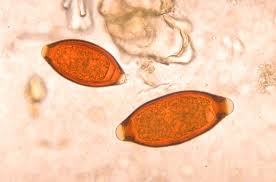- Home
- Editorial
- News
- Practice Guidelines
- Anesthesiology Guidelines
- Cancer Guidelines
- Cardiac Sciences Guidelines
- Critical Care Guidelines
- Dentistry Guidelines
- Dermatology Guidelines
- Diabetes and Endo Guidelines
- Diagnostics Guidelines
- ENT Guidelines
- Featured Practice Guidelines
- Gastroenterology Guidelines
- Geriatrics Guidelines
- Medicine Guidelines
- Nephrology Guidelines
- Neurosciences Guidelines
- Obs and Gynae Guidelines
- Ophthalmology Guidelines
- Orthopaedics Guidelines
- Paediatrics Guidelines
- Psychiatry Guidelines
- Pulmonology Guidelines
- Radiology Guidelines
- Surgery Guidelines
- Urology Guidelines
Available anthelmintic drugs losing effectivity : BMJ

Soil transmitted helminthiasis is caused by infections with the nematode worm Ascaris lumbricoides, the hookworms Necator americanus and Ancylostoma duodenale, and Trichuris trichiura. An estimated 5.3 billion of people are at risk, while 1.5 billion are infected with at least one of the soil transmitted helminths. Despite a global decline in infections, prevalence remains high in Asia, followed by sub-Saharan Africa and Latin America.
In a systematic review and network meta-analysis by the Swiss Tropical and Public Health Institute, published in the British Medical Journal (BMJ),to evaluate efficacies of anthelmintic drugs against soil transmitted helminths in terms of cure rates and egg reduction rates. it has been observed that efficacy of current treatments is decreasing and therefore new drugs are urgently needed to effectively fight parasitic worms.
The source of data was PubMed, ISI Web of Science, Embase, ScienceDirect, the Cochrane Central Register of Clinical Trials, and the World Health Organization library database from 1960 until 31 December 2016.
In the Randomised controlled trials evaluating the efficacy of a single dose regimen of albendazole, mebendazole, levamisole, and pyrantel pamoate against Ascaris lumbricoides, hookworm (Necator americanus and Ancylostoma duodenale) and Trichuris trichiura. The primary outcomes included cure rates analysed by network meta-analysis with mixed logistic regression models and egg reduction rates with mixed linear models.
A total of 55 and 46 randomised controlled trials were included in the analysis of cure rates and egg reduction rates, respectively. All drugs were highly efficacious against A lumbricoides. Albendazole showed the highest efficacy against hookworm infections with a cure rate of 79.5% (95% confidence interval 71.5% to 85.6%) and an egg reduction rate of 89.6% (81.9% to 97.3%). All drugs had low efficacy against T trichiura, with mebendazole showing the highest cure rate of 42.1% (25.9% to 60.2%) and egg reduction rate of 66.0% (54.6% to 77.3%). Estimates for the years 1995 and 2015 showed significant reductions in efficacy of albendazole against T trichiura: by 2015 the egg reduction rates fell from 72.6% (53.7% to 91.5%) to 43.4% (23.5% to 63.3%; P=0.049) and the cure rates fell from 38.6% (26.2% to 52.7%) to 16.4 (7.7% to 31.3%; P=0.027).
It was concluded that all four currently recommended drugs show limitations in their efficacy profile. While only albendazole showed good efficacy against hookworm infection, all drugs had low efficacy against T trichiura. The decrease in efficacy of albendazole against T trichiura over the past two decades is of concern. The findings indicate the need for strengthening efforts to develop new drug treatments, with a particular focus on drugs against T trichiura.These results indicate the pressing need to develop new anthelminthic drugs as efficacy of available drugs is decreasing gradually.
For more details click on the link : doi: https://doi.org/10.1136/bmj.j4307

Disclaimer: This site is primarily intended for healthcare professionals. Any content/information on this website does not replace the advice of medical and/or health professionals and should not be construed as medical/diagnostic advice/endorsement or prescription. Use of this site is subject to our terms of use, privacy policy, advertisement policy. © 2020 Minerva Medical Treatment Pvt Ltd